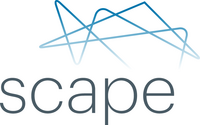Managing Architectural Debt
Background
Our client, an internationl financial services provider, had initiated a transition towards an agile organization (Scaled Agile). In the course, this had raised the question of how fundamental architecture decisions should be dealt with in the future. On the one hand, there were concerns that larger degrees of team autonomy and self-organization might increase an already sizeable growth of technical debt. On the other hand, an upcoming large-scale transformation required a stable decision framework and clear directions.
Goals
Our assignment was to develop a governance framework for architectural decision making complementing the targeted agile organization model. The framework was to support agile operations and working in autonomous teams while, at the same time, to ensure that no important decisions were taken to the disadvantage of the overall enterprise and technical debt was managed appropriately.
Approach and Deliverables
Starting from the planned target organization model and using different agile frameworks like SAFe®, O-AA® and the Spotify model as an input, a tailored governance model was developed for the client. The key principle of the concept was to maintain a high level of congruence between the future team structure on the one hand and the main building blocks of the long-term target architecture on the other (thereby adressing Conway's Law). The authority for domain-specific decisions was delegated to the team-level, accordingly. Cross-domain decisions and the corresponding communication processes were instead assigned to an overarching Community of Practice (CoP) for architects. The framework was by intention documented in a lighweight fashion only and comprised fundamental principles, role descriptions as well as simple interaction diagrams for typical decision situations.
Outcomes
The result of our engagement was an easy-to-understand governance framework for architecture decisions supporting the attained agile way of working while at the same time making clear provisions for sustainable architecture decisions aligned with corporate strategy and objectives.
Project Title
Application Landscape Planning
Industry
Insurance
Role
Enterprise Architect
Period
2012 – 2013
Project History
More References
Our Services
As a leading independent specialist in Enterprise Architecture (EA), we support our clients in implementing their strategy and successfully transforming their business and IT landscapes. Our services include establishing EA practices, taking on architecture engagements, and training Business, Enterprise, and IT Architects.
Establishing EA Practices
Building Your Core Capabilities
We put you in a position to develop target pictures, guidelines, and standards for advancing your business and IT landscape, and to guide projects accordingly. Together, we implement proven processes and tools.
Enterprise Architecture Office
Expanding Your Operating Range
We extend your architecture team and take over the architecture work in projects. Our experienced architects support you with critical tasks such as developing target pictures and managing complex transformations.
Coaching & Training
Developing the Necessary Skills
We coach architects and executives in critical situations. Additionally, we offer a comprehensive training program on all important topics in the areas of Business, Enterprise, and IT Architecture.
Kundenreferenz

Business Architecture Management – Schulung
Client Reference

Business Architecture Management Training











